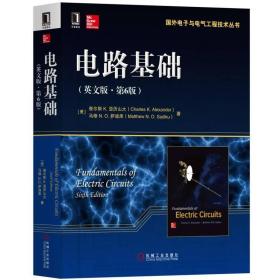
电路基础(英文版·第6版)
正版85品 有笔记发圆通
¥ 21.18 1.5折 ¥ 139 八五品
库存2件
浙江金华
认证卖家担保交易快速发货售后保障
作者[美]查尔斯K.亚历山大(Charles K.Alexander)、马修 N.O.萨迪库(Matthew N.O.Sadiku) 著
出版社机械工业出版社
出版时间2018-01
版次6
装帧平装
货号9787111586340
上书时间2024-08-20
- 在售商品 暂无
- 平均发货时间 10小时
- 好评率 暂无
- 最新上架
商品详情
- 品相描述:八五品
图书标准信息
- 作者 [美]查尔斯K.亚历山大(Charles K.Alexander)、马修 N.O.萨迪库(Matthew N.O.Sadiku) 著
- 出版社 机械工业出版社
- 出版时间 2018-01
- 版次 6
- ISBN 9787111586340
- 定价 139.00元
- 装帧 平装
- 开本 16开
- 纸张 胶版纸
- 页数 903页
- 字数 99999千字
- 丛书 国外电子与电气工程技术丛书
- 【内容简介】
-
本书前5版获得了极大的成功,第6版更新了所涉及领域的一些内容和较新的研究进展,涵盖了我国“电路分析基础”课程的全部教学要求和“电路理论基础”课程的大部分要求,全书分为直流电路、交流电路与高级电路三部分,还囊括了学生需要掌握的所有常用数学公式和物理基本原理。利用六步解题法。求解和解决电路问题的六步法贯穿全书,以帮助学生建立一个求解问题的系统方法,更好地理解理论并减少计算错误。结合工程实际应用。每章最后一节专门介绍与该章概念相关的实际应用,每章至少提供一个实际应用问题或者实际元器件,帮助学生了解如何将所学概念应用于实际系统中。适合用做双语授课或英文授课的教材。还新增和修订了大量章后习题,为学生提供了充分的练习,同时帮助学生掌握关键概念。
- 【作者简介】
-
Charles K. Alexander 分别于1967年和1971年获得俄亥俄大学的电气工程学硕士学位和博士学位,目前为美国克利夫兰州立大学Fenn工学院电气与计算机工程系教授以及电子学与航空航天技术研究中心(CREATE)的主任。他是IEEE的会士,曾任IEEE主席和CEO。他于1984年获得IEEE百年纪念奖章,还先后荣获英国工程委员会颁发的杰出工程教育成就奖和杰出工程教育领导奖。
Matthew N. O. Sadiku 博士,美国Prairie View A&M大学教授,兼任IEEE Transacfions on Education杂志副主编。他曾在朗讯、波音等公司从事研发工作,发表过百余篇学术论文,出版过20余部著作。
- 【目录】
-
Contents
Preface iv
About the Authors xi
PART 1 DC Circuits 2
Chapter 1 Basic Concepts 3
1.1 Introduction 4
1.2 Systems of Units 5
1.3 Charge and Current 6
1.4 Voltage 9
1.5 Power and Energy 10
1.6 Circuit Elements 14
1.7 Applications 16
1.7.1 TV Picture Tube
1.7.2 Electricity Bills
1.8 Problem Solving 19
1.9 Summary 22
Review Questions 23
Problems 24
Comprehensive Problems 26
Chapter 2 Basic Laws 29
2.1 Introduction 30
2.2 Ohm’s Law 30
2.3 Nodes, Branches, and Loops 35
2.4 Kirchhoff’s Laws 37
2.5 Series Resistors and Voltage Division 43
2.6 Parallel Resistors and Current Division 44
2.7 Wye-Delta Transformations 51
Delta to Wye Conversion
Wye to Delta Conversion
2.8 Applications 57
2.8.1 Lighting Systems
2.8.2 Design of DC Meters
2.9 Summary 63
Review Questions 64
Problems 65
Comprehensive Problems 77
Chapter 3 Methods of Analysis 79
3.1 Introduction 80
3.2 Nodal Analysis 80
3.3 Nodal Analysis with Voltage Sources 86
3.4 Mesh Analysis 91
3.5 Mesh Analysis with Current Sources 96
3.6 Nodal and Mesh Analyses by Inspection 98
3.7 Nodal Versus Mesh Analysis 102
3.8 Circuit Analysis with PSpice 103
3.9 Applications: DC Transistor Circuits 105
3.10 Summary 110
Review Questions 111
Problems 112
Comprehensive Problem 124
Chapter 4 Circuit Theorems 125
4.1 Introduction 126
4.2 Linearity Property 126
4.3 Superposition 128
4.4 Source Transformation 133
4.5 Thevenin’s Theorem 137
4.6 Norton’s Theorem 143
4.7 Derivations of Thevenin’s and Norton’s Theorems 147
4.8 Maximum Power Transfer 148
4.9 Verifying Circuit Theorems with PSpice 150
4.10 Applications 153
4.10.1 Source Modeling
4.10.2 Resistance Measurement
4.11 Summary 158
Review Questions 159
Problems 160
Comprehensive Problems 171
Chapter 5 Operational Amplifiers 173
5.1 Introduction 174
5.2 Operational Amplifiers 174
5.3 Ideal Op Amp 178
5.4 Inverting Amplifier 179
5.5 Noninverting Amplifier 181
5.6 Summing Amplifier 183
5.7 Difference Amplifier 185
5.8 Cascaded Op Amp Circuits 189
5.9 Op Amp Circuit Analysis with PSpice 192
5.10 Applications 194
5.10.1 Digital-to-Analog Converter
5.10.2 Instrumentation Amplifiers
5.11 Summary 197
Review Questions 199
Problems 200
Comprehensive Problems 211
Chapter 6 Capacitors and Inductors 213
6.1 Introduction 214
6.2 Capacitors 214
6.3 Series and Parallel Capacitors 220
6.4 Inductors 224
6.5 Series and Parallel Inductors 228
6.6 Applications 231
6.6.1 Integrator
6.6.2 Differentiator
6.6.3 Analog Computer
6.7 Summary 238
Review Questions 239
Problems 240
Comprehensive Problems 249
Chapter 7 First-Order Circuits251
7.1 Introduction 252
7.2 The Source-Free RC Circuit 253
7.3 The Source-Free RL Circuit 257
7.4 Singularity Functions 263
7.5 Step Response of an RC Circuit 271
7.6 Step Response of an RL Circuit 278
7.7 First-Order Op Amp Circuits 282
7.8 Transient Analysis with PSpice 287
7.9 Applications 291
7.9.1 Delay Circuits
7.9.2 Photoflash Unit
7.9.3 Relay Circuits
7.9.4 Automobile Ignition Circuit
7.10 Summary 297
Review Questions 298
Problems 299
Comprehensive Problems 309
Chapter 8 Second-Order Circuits311
8.1 Introduction 312
8.2 Finding Initial and Final Values 313
8.3 The Source-Free Series RLC Circuit 317
8.4 The Source-Free Parallel RLC Circuit 324
8.5 Step Response of a Series RLC Circuit 329
8.6 Step Response of a Parallel RLC Circuit 334
8.7 General Second-Order Circuits 337
8.8 Second-Order Op Amp Circuits 342
8.9 PSpice Analysis of RLC Circuits 344
8.10 Duality 3488.11 Applications 351
8.11.1 Automobile Ignition System
8.11.2 Smoothing Circuits
8.12 Summary 354
Review Questions 355
Problems 356
Comprehensive Problems 365
PART 2 AC Circuits366
Chapter 9 Sinusoids and Phasors 367
9.1 Introduction 368
9.2 Sinusoids 369
9.3 Phasors 374
9.4 Phasor Relationships for Circuit Elements 383
9.5 Impedance and Admittance 385
9.6 Kirchhoff’s Laws in the Frequency Domain 387
......
点击展开
点击收起
— 没有更多了 —

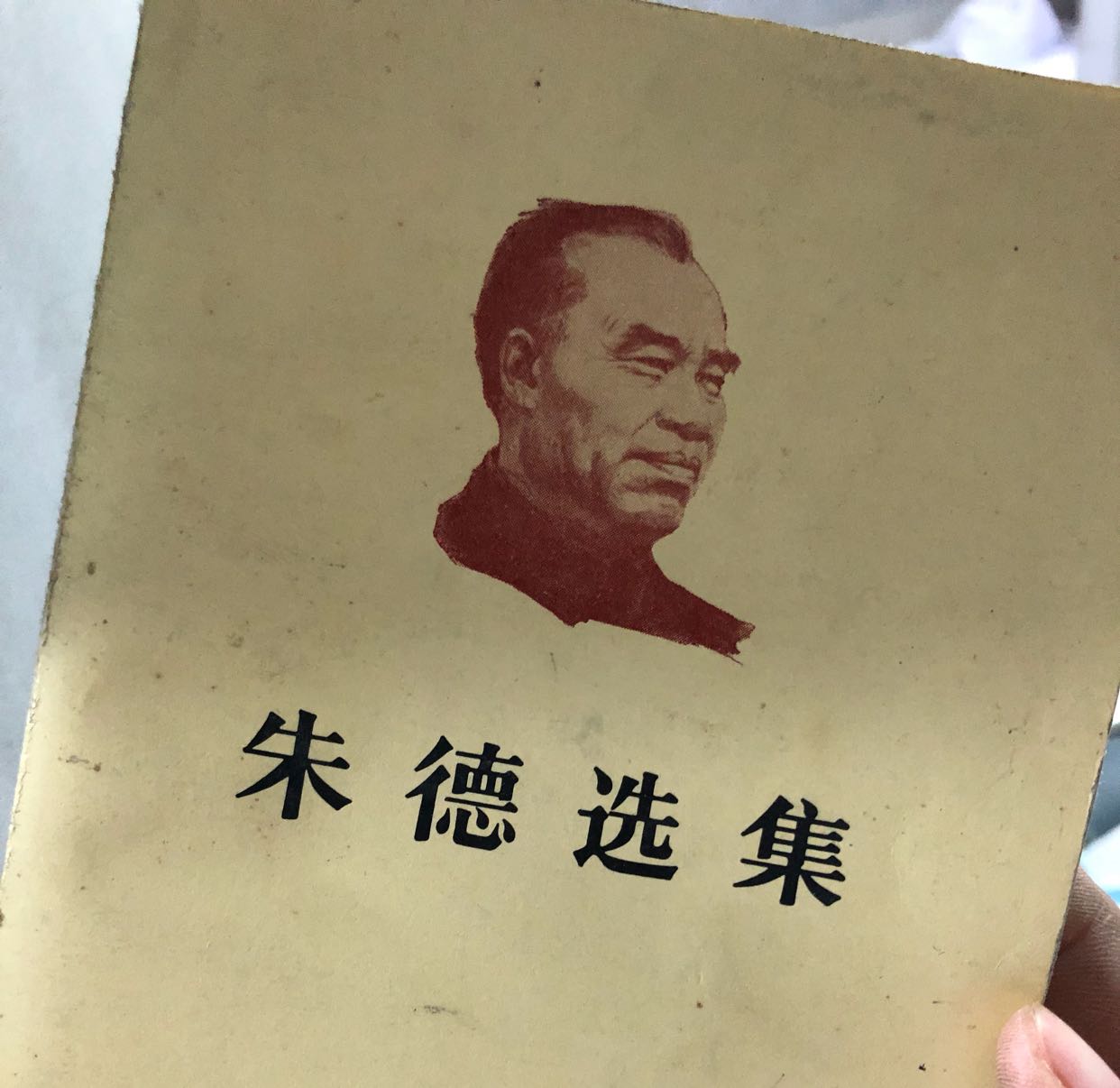


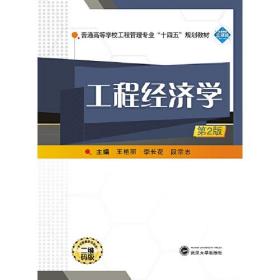

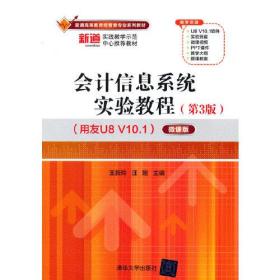


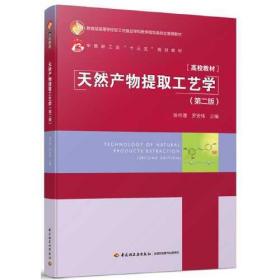
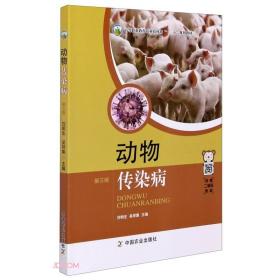

以下为对购买帮助不大的评价